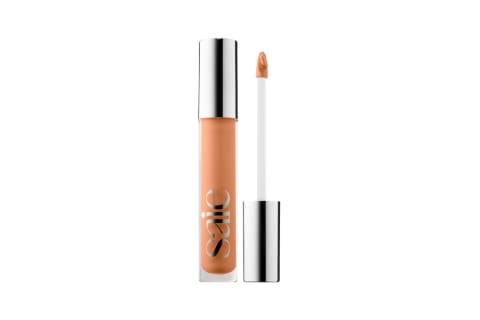If you feel like you’ve tried everything, you might want to start over with a new goal: Rather than trying every product under the sun to lighten those half-moons under your eyes, you should work to find the root cause. This discoloration is starkly different from eye bags in terms of cause and appearance. Eye bags are consistent outpourings of tissue below the eye that are “usually caused by fat herniation as the tissue becomes less firm with age,” Marcus says. Dark circles are also different from general eye puffiness. “Puffy eyes usually refers to swelling around the entire eye, which may be a result of an allergy, dietary factors (salt, alcohol), illness, or other sources of inflammation,” Marcus says. Some of these same factors can lead to dark circles, too—more on that below. So contrary to popular belief, sleep is not directly linked to dark circles but rather exacerbates their appearance. “Not getting enough sleep or poor-quality sleep may accentuate the problems that make eyes appear tired,” Marcus echoes. So even if you’re getting eight hours, subpar sleep quality may be to blame. In fact, one study2 found family history to be the largest predictor of dark circles. This doesn’t necessarily mean you’ll be unable to lighten them; however, it may explain the initial reason you’re experiencing under-eye shadows in the first place. “This is particularly exacerbated by sun exposure and inflammation and tends to be more of a risk in those with darker skin tones,” Marcus says about hyperpigmentation. This increase in visual hyperpigmentation in darker skin tone transfers over to sun spots, dark spots caused by breakouts, and so on. As your collagen decreases, you may consider supplementing to level out the production and degradation—here’s everything you need to know about starting the process. A lack of adequate water consumption has been linked to an increase in skin dryness4 overall, so a few extra cups will do much more for your skin (and full-body) health than prevent dark circles. A few ingredients Marcus suggests looking out for in your next eye cream include caffeine, niacinamide, peptides, hyaluronic acid, and gentle retinol. Not sure where to look? We searched high and low for the very best creams for dark circles—here are our top 18 picks. If you’re on the path to sleeping better, check out these 15 tips to improve the quality of your slumber. If you’re not sure where to start, we asked experts for their best hydration tips—here’s what they said. It’s important to note that dark circles are often genetic. So it’s not always possible to avoid them entirely. However, most of these tips are just good skin care and health care practices in general, so worth following regardless. And many folks are curious what sort of professional intervention can help them address dark circles—most notably, can filler help? The answer is dependent on several factors. First, filler (called tear through filler) can only help if your dark circles are caused by density loss in the area, not due to pigmentation. “There are many causes for discoloration under the eyes, and one of them is hollowing or loss of volume. This leads to a depressed ‘tear trough’, which is a groove between the lower eyelid and cheek, and can contribute to a tired appearance,” explains board-certified dermatologist Brian Hibler, M.D., of Schweiger Dermatology Group in New York City. For example, a good candidate may be someone whose eye area appears sallow, which casts shadows in the area. By strategically injecting hyaluronic acid filler into the area, it smooths out the skin, reducing shadows. It’s very important to note that this type of filler requires a more skillful hand than other areas might. This is because it comes with notable risks: “The major risks are bruising and swelling, with less common risks including infection or nodule formation. If the filler is inadvertently injected into one of the blood vessels it can cause necrosis (death) of the overlying skin or can cause occlusion of the blood vessels leading to the eye and result in blindness,” says Hibler. “Therefore, it is important to see a board-certified dermatologist with appropriate training in safely performing these procedures.” It’s also a more challenging injection method. As Hibler explains, “It is typically performed using a cannula (long, flat-topped tube) to thread the filler into the hollowed area using a small insertion point in the mid-cheek. Some injectors opt to use a needle in this location, however, a series of needle punctures could lead to more bruising and increase the risk of inadvertent injection into one of the blood vessels.” So you should find a board-certified aesthetic dermatologist or surgeon. We should also add that you should find a professional who is experienced in this specific area. Some injectors are better at lips, cheeks, etcetera—find one who knows the area well.







